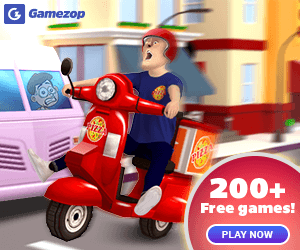
9 Rucking Exercises That Help Burn Belly Fat and Boost Endurance
6 days ago | 5 Views
Are you weary of your usual fitness regimen? Consider trying rucking. Recognized as a comprehensive workout, rucking is a low-impact cardiovascular activity that involves walking or hiking while carrying a weighted backpack or rucksack. This exercise offers numerous advantages, including the reduction of belly fat. It effectively merges cardiovascular exercise with strength training, making it more beneficial than standard walking. The added weight enhances the intensity of your workout and activates various muscle groups, leading to increased calorie expenditure. However, it is crucial to practice rucking correctly. Explore the benefits of rucking and discover some straightforward exercises to incorporate into your fitness routine.
What is rucking?
Rucking is a type of low-impact cardiovascular exercise that entails walking or hiking with a weighted backpack or rucksack. While it is commonly utilized in military training, it has gained popularity among those seeking to improve their overall fitness. According to fitness expert Yash Agarwal, rucking offers numerous advantages; the additional weight enhances the intensity of a standard walk, transforming it into a comprehensive full-body workout. Furthermore, a study published in the journal Ergonomics indicates that military ruck marching with load carriage increases ground reaction forces, which are associated with bone stress injuries.

Rucking for belly fat reduction: How does it help?
Rucking offers numerous advantages for reducing belly fat, primarily due to its unique blend of cardiovascular exercise and resistance training. Here’s an overview of its effectiveness:
Caloric expenditure: Engaging in rucking, which involves walking with added weight, significantly boosts calorie burn, as highlighted in a study published in the Journal of Clinical Medicine. This activity surpasses traditional walking or jogging in terms of calories burned, thanks to the additional load. The increased caloric expenditure contributes to a calorie deficit, a crucial factor in diminishing body fat, particularly in the abdominal area. This aspect of rucking is particularly beneficial for weight loss.
Enhanced metabolism: The resistance component of rucking is particularly advantageous. It promotes muscle development, as noted in research published in the journal Military Muscle. An increase in muscle mass elevates the resting metabolic rate, allowing the body to continue burning calories even after the exercise session has concluded.
Core activation: Carrying a weighted backpack necessitates the engagement of core muscles to maintain stability and proper posture. Consequently, one of the significant benefits of rucking is the strengthening of core muscles, which aids in reducing belly fat and firming the midsection.
Decreased stress hormones: A notable advantage of rucking and similar physical activities is their ability to alleviate stress. Engaging in moderate-intensity exercises like rucking can lower cortisol levels, a hormone associated with the accumulation of abdominal fat. By reducing cortisol, rucking supports efforts to decrease belly fat.
Enhanced cardiovascular health: Rucking is particularly beneficial for heart health, as it elevates heart rate and improves cardiovascular fitness. A robust cardiovascular system is essential for effective fat metabolism.
Optimal fat burning: By merging cardiovascular and strength training elements, rucking creates an ideal environment for fat burning, making it one of the most effective methods for reducing belly fat.
Comprehensive workout: Rucking provides a full-body workout. In addition to activating the core, it engages multiple muscle groups, contributing to overall fitness.
Rucking exercises for belly fat reduction
Now that we know the benefits of rucking, here are some exercises to maximise belly fat reduction:
1. Basic weighted ruck walk
- Wear a weighted backpack (start with 10-20 percent of your body weight).
- Walk at a steady pace for 30-60 minutes.
- Maintain good posture with your shoulders back and core engaged.
2. Hill or incline rucking
- Find a hill or incline.
- Walk up the hill with your rucksack, keeping your core engaged.
- Walk back down with control.
- Perform for 30 minutes.
3. Rucking Lunges
- Stand with the weighted backpack on your back.
- Step forward into a lunge, lowering your back knee toward the ground.
- Push back to the starting position and switch legs.
- Do 3 sets of 10-12 reps per leg.
4. Ruck step-ups
- Find a bench or sturdy surface about knee height.
- Step onto the platform with one leg.
- Push through your heel and bring the other leg up.
- Step down and repeat. Perform 3 sets of 10 reps per leg.
5. Ruck Russian twists
- Sit on the ground holding your rucksack in front of you.
- Lean back slightly and lift your feet off the ground.
- Twist your torso, bringing the rucksack to the side.
- Twist to the other side.
- Perform 3 sets of 15-20 reps.
6. Plank ruck drags
- Get into a plank position with the rucksack on the floor beside you.
- Drag the rucksack across your body with one hand while keeping your core tight.
Switch sides and repeat.
- Do 3 sets of 10 reps per side.
7. Rucking squats
- Stand with feet shoulder-width apart with the rucksack on your back.
- Squat down until your thighs are parallel to the ground.
- Push back up.
- Perform 3 sets of 12-15 reps.
8. Overhead ruck carry
- Lift your rucksack overhead with both arms.
- Walk forward while keeping the rucksack overhead.
- Engage your core and maintain an upright posture.
- Perform for 2-3 minutes, then rest and repeat.
9. Ruck deadlifts
- Place the rucksack on the floor in front of you.
- Hinge at the hips, keeping your back straight.
- Grab the rucksack and lift it while engaging your glutes and core.
- Perform 3 sets of 10-12 reps.
What to keep in mind while rucking
While there are many benefits of rucking, it needs to be done in the right way. Here is what you should remember:

Read Also: Kareena Kapoor’s Nutritionist Rujuta Diwekar Calls Weighing Scale ‘Stupid’
Get the latest Bollywood entertainment news, trending celebrity news, latest celebrity news, new movie reviews, latest entertainment news, latest Bollywood news, and Bollywood celebrity fashion & style updates!
HOW DID YOU LIKE THIS ARTICLE? CHOOSE YOUR EMOTICON!
#




















